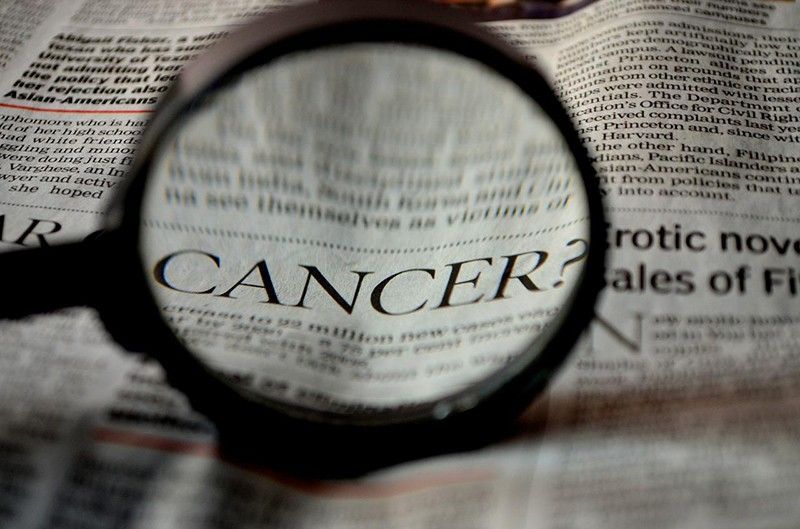Guideline impasse delaying cancer assistance fund utilization

Thousands of Filipinos are diagnosed with a certain type of cancer every year. Cancer affects everyone, regardless of age, gender or socioeconomic status.In fact, we can assume that each household in the country has a family member, or at least, a close relative who has been afflicted with the catastrophic disease.
In 2020 alone, more than 153,750 new cases were noted, where cancer of the breast (27,163), lung (19,180), colon (11,315), liver (10,594) and prostate (8,242) accounted for the top five diseases and consisted of more than half of the total new cancer cases, according to the data published in the Global Cancer Observatory.
For several years, cancer has remained as one of the most challenging diseases not only in terms of diagnosis and treatment, but also affecting the psycho-socio-cultural-economic aspects of life.
When cancer strikes, crisis befalls the individual and family members. As documented in the Philippine Costs in Oncology (PESO) study conducted by Dr. Corazon Ngelangel, et al., “the concept of total suffering from cancer brings together not just the physical pain from the disease per se but also social, spiritual, cultural and psychological aspects greatly impairing quality of life.”
Based on the recently released data by the Philippine Statistics Authority, cancer remains one of the top causes of death with 59,503 recorded cases from January to December 2021, just next to ischaemic heart diseases, cerebrovascular diseases and COVID-19.
The passage of the National Integrated Cancer Control Act (NICCA) in 2019 brought consolation and hope for patients and their families. Many of them expect that the landmark law will provide them access to equitable, quality and affordable care that are vital for their survival and somewhat ease the financial burden.
With the integrated approach envision by the NICCA, cancer may no longer be a death sentence.
However, vital to the successful implementation of every health policy or law is sustainable allocation and support for funding. This is where cancer patients, their families, and society in general need to see decisive action from our leaders.
As stated specifically in Section 35 (Appropriations) under NICCA, a strategic plan formulated by its Council in coordination with other stakeholders will be used as the basis for the allocation of the National Integrated Cancer Control Program (NICCP) and the Cancer Assistance Fund (CAF) in the Department of Health’s annual budget for the succeeding years.
Equally important as the budget intended for the NICCP, the CAF supports the access to free medicines under the Cancer and Supportive Palliative Medicines Access Program (CSPMAP) and access to cancer treatment assistance programs, such as early detection, rapid diagnosis, treatment and care. The CAF refers to the annual DOH-managed pooled funds and can be sourced from the (1) General Appropriations Act (GAA), (2) donations from both local and foreign donors, and (3) proceeds from any fund-raising activities that may be conducted or spearheaded either by the NICCA Council or the Cancer Control Division of the DOH. As also stated in the law, the CAF together with existing PhilHealth benefits should now be available in both public and private DOH-licensed cancer care centers.
However, for this year, an allocation in the 2022 GAA amounting to Php 529.2 million for CAF was still unutilized due to a pending Joint Memorandum Circular between the DOH and Department of Budget & Management (DBM). Apparently, the said Circular is needed as part of the condition in the GAA’s special provisions.
Moreover, cancer stakeholders faced another hurdle when they were recently informed by DOH, as recommended by the DBM, that the CAF is now planned to be merged with the NICCP allocation in the proposed annual budget for next year, which is contrary to the law’s provision. Ostensibly, this was reflected in the Memorandum Circular on the use of CAF which at the time of this writing has not yet been released.
This year’s unutilized CAF is meant to provide the needed diagnosis or active treatments to more patients, delivering the promise of NICCA and protecting patients from experiencing financial catastrophe.
Given that we are already in the second half of the year and a new administration has taken over, we hope that government officials, whether newly assigned and/or appointed, will facilitate the release of this year’s CAF.
Furthermore, as previously appealed by cancer stakeholders in the past couple of years, we urge our new set of legislators to support the call to retain the CAF allocation and institutionalized as a permanent line item in the DOH budget in the succeeding years, as provided in the Law.
The treatment of cancer primarily relies in the implementation of health care legislation and policy. As stated by Philippine Cancer Society president, Dr. Ngelangel, in the PESO study , “the effective control of suffering is a realm not exclusive to the control of disease per se…this underlines the multidisciplinary nature of the management of cancer in and beyond the confines of the clinic to legislative and public health care policy”.
For cancer patients and their families, further delay in accessing the Cancer Assistance Fund is not just a sad bureaucratic reality, it is matter of life and death.
Alvin Manalansan is the health and nutrition fellow of think tankl Stratbase ADR Institute and is a co-convenor of UHC Watch
- Latest




























